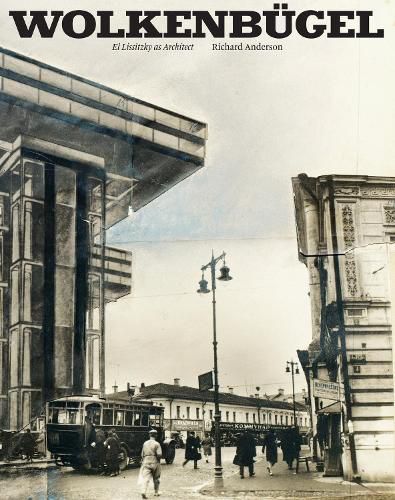Readings Newsletter
Become a Readings Member to make your shopping experience even easier.
Sign in or sign up for free!
You’re not far away from qualifying for FREE standard shipping within Australia
You’ve qualified for FREE standard shipping within Australia
The cart is loading…






How a visionary, never-realized architectural project, devised by one of the twentieth century's greatest artists, shaped architectural culture in Europe between the world wars.
How a visionary, never-realized architectural project, devised by one of the twentieth century's greatest artists, shaped architectural culture in Europe between the world wars.
After achieving international acclaim as a painter and designer, El Lissitzky set out in 1924 to convince the world-and himself-that he was also an architect. He did this with a project for a "horizontal skyscraper," which he gave an obscure and untranslatable name- Wolkenb gel. Eight of these buildings, perched atop slender pillars, were intended to stand at major intersections along Moscow's Boulevard Ring, integrating the flow of tramlines, subways, and elevators. In Wolkenb gel, Richard Anderson explores Lissitzky's translation of visual and textual media into spatial ideas and offers an in-depth study of the surviving drawings and archival artifacts related to Lissitzky's most complex architectural proposal.
This book offers a new and definitive account of how Lissitzky expanded the conceptual and representational tools available to the modern architect by drawing on many sources-including photography, typography, exhibition design, and even the elementary forms of the alphabet-to create the Wolkenb gel. Anderson shows how the production and reception of a paper project served to link key ideas and relationships that animated the worlds of art and architecture, offering a new view on received histories of the interwar avant-gardes. By attending to Lissitzky's singular architectural project, Anderson reveals the dynamics of internationality in the constitution of modern architectural culture in Europe.
$9.00 standard shipping within Australia
FREE standard shipping within Australia for orders over $100.00
Express & International shipping calculated at checkout
How a visionary, never-realized architectural project, devised by one of the twentieth century's greatest artists, shaped architectural culture in Europe between the world wars.
How a visionary, never-realized architectural project, devised by one of the twentieth century's greatest artists, shaped architectural culture in Europe between the world wars.
After achieving international acclaim as a painter and designer, El Lissitzky set out in 1924 to convince the world-and himself-that he was also an architect. He did this with a project for a "horizontal skyscraper," which he gave an obscure and untranslatable name- Wolkenb gel. Eight of these buildings, perched atop slender pillars, were intended to stand at major intersections along Moscow's Boulevard Ring, integrating the flow of tramlines, subways, and elevators. In Wolkenb gel, Richard Anderson explores Lissitzky's translation of visual and textual media into spatial ideas and offers an in-depth study of the surviving drawings and archival artifacts related to Lissitzky's most complex architectural proposal.
This book offers a new and definitive account of how Lissitzky expanded the conceptual and representational tools available to the modern architect by drawing on many sources-including photography, typography, exhibition design, and even the elementary forms of the alphabet-to create the Wolkenb gel. Anderson shows how the production and reception of a paper project served to link key ideas and relationships that animated the worlds of art and architecture, offering a new view on received histories of the interwar avant-gardes. By attending to Lissitzky's singular architectural project, Anderson reveals the dynamics of internationality in the constitution of modern architectural culture in Europe.